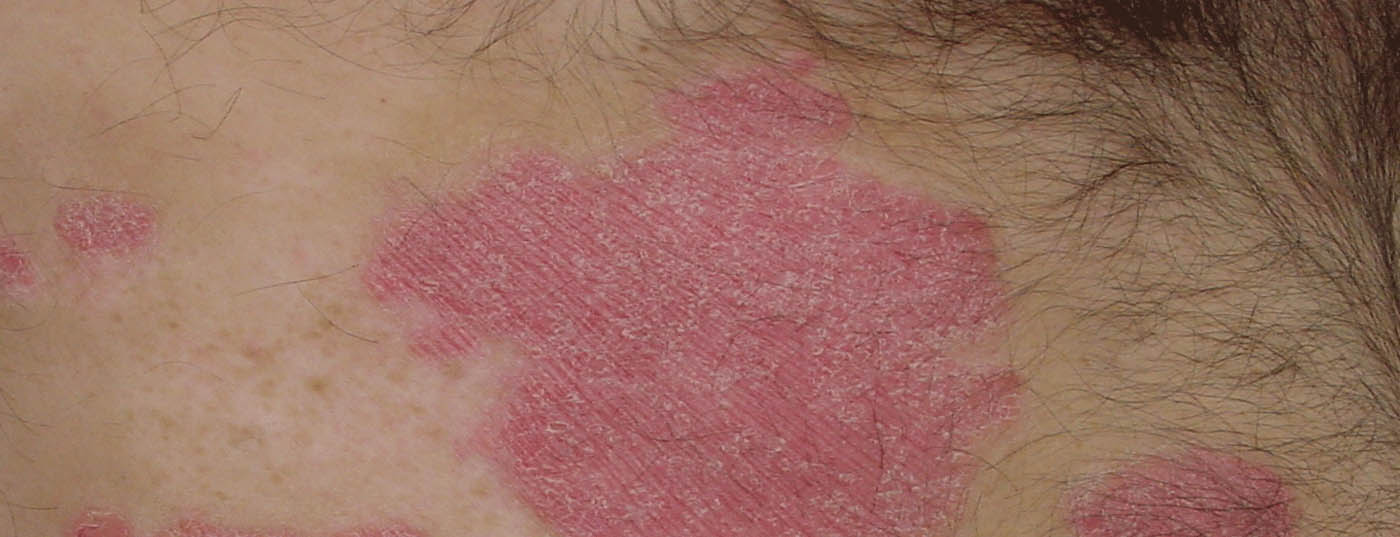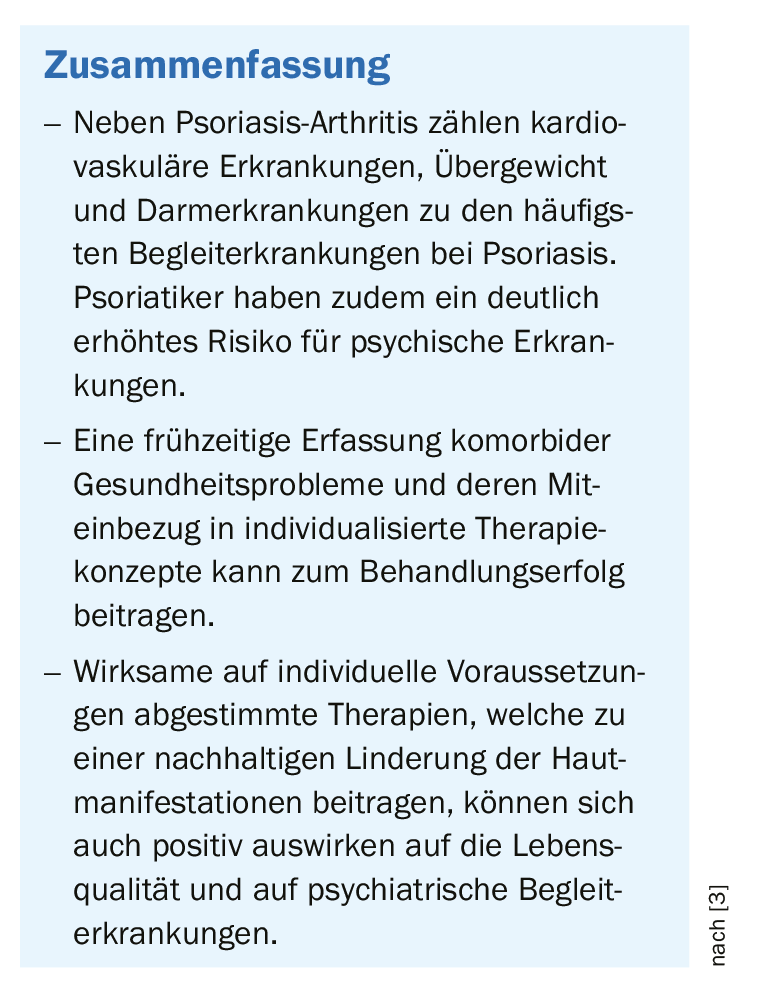Psoriatics are often affected not only by skin manifestations, but also suffer from one or more concomitant diseases. This should be taken into account in the context of individualized therapy concepts. What this means in concrete terms is the subject of various current studies.
Personalized medicine comprises diagnostic, preventive and therapeutic measures that are optimally tailored to an individual [1]. This approach is playing an increasingly important role in modern disease management of systemic diseases such as psoriasis. 25 to 30 percent of patients develop psoriatic arthritis (PsA) [2]. In addition, psoriasis is associated with an increased risk of cardiovascular and metabolic disease, inflammatory bowel disease, liver and kidney disease, and mental illness, among others [3].
Implications for treatment with biologics
It is important that comorbidities are recorded and that therapy reduces both skin manifestations and concomitant diseases whenever possible. The life expectancy of psoriasis sufferers is reduced due to a variety of factors, with cardiovascular disease being one of the most common causes of mortality [3]. The question of what implications comorbidities have on systemic therapy with biologics is becoming increasingly important. Professor Alice Gottlieb, Icahn School of Medicine, New York, presented results of a post-hoc analysis at the EADV 2019 meeting [4]. The data set was based on four phase III RCTs of a total of 2401 patients treated with either the IL17 inhibitor secukinumab (150 or 300 mg) or the TNF-α inhibitor etanercept (50 mg) over a 12-week period. Outcomes related to efficacy and safety were stratified with respect to presence or absence of baseline comorbidities. 61% of patients were overweight (BMI ≥ 30 kg/m2), 37% suffered from hypertension, and 18% had psoriatic arthritis. There were no significant differences in efficacy and safety between patients with vs. without comorbidities. Secukinumab resulted in greater improvement in symptoms and tolerability was also good in those with comorbidities at baseline. Up to a body weight of 90 kg, the response to therapy was unaffected.
Meta-analysis on long-term effects
A meta-analysis published in JEADV in 2019 compared outcomes of different randomized-controlled trials (RCTs) in terms of effects at 52 weeks [5]. RCTs were included that recorded PASI 75, PASI 90, and PASI 100 as outcomes. In an initial analysis, brodalumab was found to be most effective, followed by secukinumab, ustekinumab, and etanercept. In a second analysis, which included additional studies and agents (adalimumab, apremilast, infliximab and ixekizumab), these results were confirmed: Brodalumab showed the best results, followed by ixekizumab and secukinumab, which proved superior to ustekinumab, infliximab and adalimumab. Etanercept and apremilast had the smallest long-term effects in this analysis. As the evidence base of RCTs with evidence of efficacy over a 52-week period is currently still relatively small, especially for the newer biologics, the second analysis is based on extrapolated values based on the treatment results of the induction phase.
Take the psychosocial dimension into account
Effective therapies can lead not only to a reduction in skin manifestations, but also to an improvement in overall quality of life and psychiatric symptoms. However, the psychosocial impact does not always correlate with the objective severity of the disease, so it is important to include the subjective component as well. Major modifiable risk factors that contribute to worsening symptoms include cigarette smoking and excessive alcohol consumption. Psychological impairment is common in psoriasis patients. A Danish population-based case-control study published in 2019 found that 4.9% developed mental illness over a 10-year period, and psoriatics had a 75% higher risk of mental illness [6]. For these patients in particular, accompanying psychosocial therapy is an important aspect. A recent study addresses the issue of motivation to use specific psychosocial interventions in individuals affected by psoriasis. The research project PITSCH “Development of an instrument to assess therapy motivation for psychosocial interventions in people with visible chronic skin diseases” led by Dr. Rachel Sommer from the University of Hamburg was awarded by the German Dermatological Society (DDG) [7].
Literature:
- Federal Office of Public Health (FOPH): Biomedical Research and Technology. Personalized Medicine, www.bag.admin.ch, last accessed 18.05.2020
- Gensthaler BM: Psoriasis: symptom control as a therapeutic goal, Pharamazeutische Zeitung, May 27, 2019, www.pharmazeutische-zeitung.de/symptomkontrolle-als-therapieziel, last accessed May 18, 2020.
- Kovitwanichkanont T, et al: Beyond skin deep: addressing comorbidities in psoriasis. Med J Aust. 2020 May 10. doi: 10.5694/mja2.50591. [Epub ahead of print].
- International Psoriasis Council (IPC): www.psoriasiscouncil.org/2019_eadv_congress_report.htm#, last accessed 05/18/2020.
- Sawyer LM, et al: Long-term efficacy of novel therapies in moderate-to-severe plaque psoriasis: a systematic review and network meta-analysis of PASI response. JEADV 2019;33: 355-366
- Leisner MZ, et al: Psoriasis and Risk of Mental Disorders in Denmark. JAMA Dermatol 2019; 155(6): 745-747.
- Deutscher Psoriasisbund e.V.: www.psoriasis-bund.de/aktuelles, last accessed 18.05.2020
DERMATOLOGY PRACTICE 2020; 30(3): 24












